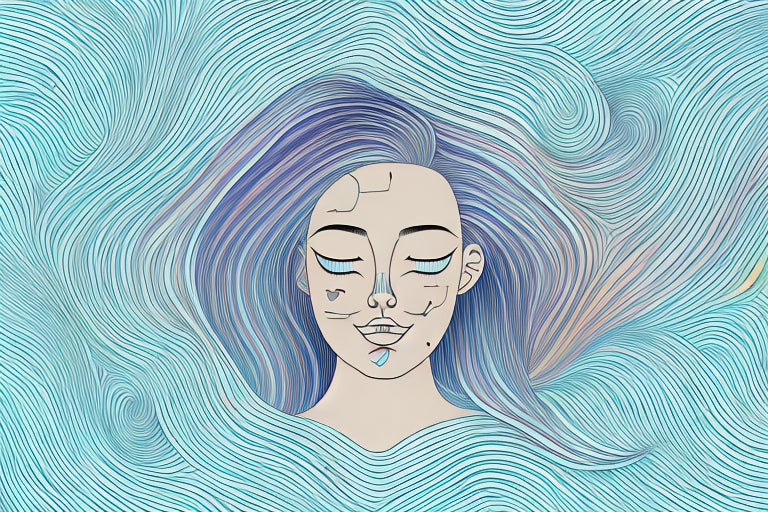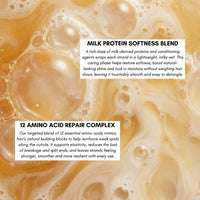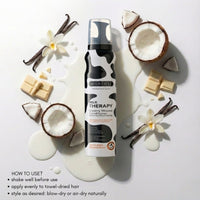The Dangers of Hair Color Damage: What You Need to Know
Posted by MORFOSE COSMETICS

The Dangers of Hair Color Damage: What You Need to Know
Have you ever experienced dry, dull, and lifeless hair after coloring it? This is a common issue faced by many people who dye their hair. Hair color damage can cause various problems such as breakage, scalp irritation, and fading of color, among others. Understanding the risks of hair color damage is essential to protect your hair and keep it healthy. In this article, we will explore the dangers of hair color damage, how to prevent it, and the best ways to repair it.
Understanding Hair Color Damage
Before discussing the risks of hair color damage, let's comprehend how hair coloring works and the science behind it. Hair color contains chemicals such as ammonia or hydrogen peroxide, which penetrate the hair shaft and change its natural color. This process creates openings in the hair cuticle, which can lead to damage and dryness. The more significant the color change, the more substantial the damage.
When it comes to hair coloring, it's essential to understand that the process is not one-size-fits-all. Different hair types and colors will react differently to hair dye, and it's crucial to choose the right type of dye for your hair. For example, individuals with fine hair may want to avoid permanent hair dye, as it can be too harsh and cause significant damage.
How Hair Coloring Works
Hair coloring works by using chemicals to lift or remove the pigment from your natural hair color and depositing new color onto the hair shaft. The most commonly used hair dyes are permanent, semi-permanent, and temporary colors. Permanent hair dyes can last up to eight weeks and involve a more significant chemical process, while semi-permanent dyes fade after several washes. Temporary hair colors are another option and last until the next shampoo.
It's important to note that not all hair dyes are created equal. Some hair dyes contain harsh chemicals that can cause significant damage to your hair, while others contain more natural ingredients that are gentler on your hair. When choosing a hair dye, it's essential to read the label carefully and do your research to ensure that you're choosing a product that is safe for your hair.
Common Causes of Hair Color Damage
There are several reasons why hair color can cause damage. Overlapping the hair dye can cause unwanted hair breakage, while using the wrong type of dye's strength can cause hair to become brittle and dry. Another common cause is leaving the dye on for too long, which can burn the hair and scalp. Other reasons include using harsh shampoos or conditioners, heat styling, and exposure to the sun's harmful UV rays.
It's essential to take steps to prevent hair color damage. One way to do this is by using a hair mask or deep conditioner regularly. These products can help to restore moisture to your hair and prevent damage caused by harsh chemicals. Additionally, it's important to avoid heat styling as much as possible and to use a heat protectant spray when you do use heat tools.
Identifying the Signs of Damage
Signs of hair color damage vary from person to person, but some common signs include dry, brittle, and lifeless hair. Hair that breaks easily, split ends, and an itchy, irritated scalp is also a sign of hair damage. Hair color damage can also affect the health of your hair follicles, leading to hair loss and thinning. If you experience any of these symptoms, it's crucial to seek professional help.
In conclusion, hair color can be a fun and exciting way to change up your look, but it's essential to understand the risks of hair color damage. By taking steps to prevent damage and being aware of the signs of damage, you can keep your hair healthy and beautiful.
The Risks of Hair Color Damage
Hair color is a popular way to change up your look, but it's important to be aware of the risks that come with it. Here are some of the potential risks of hair color damage:
Hair Breakage and Loss
One of the most significant risks of hair color damage is hair breakage and loss. Excessive chemical processing can damage the hair, leading to breakage and split ends. Hair breakage can also cause hair thinning, making it difficult to grow long, healthy hair. To avoid hair breakage, it's essential to use hair products that nourish and protect your hair.
Additionally, it's important to take breaks between coloring sessions to allow your hair to recover and strengthen. You can also consider using natural hair dyes or henna, which are gentler on the hair.
Scalp Irritation and Allergic Reactions
Many people experience scalp irritation and allergic reactions to hair color. Chemicals such as ammonia and PPD can cause an allergic reaction, leading to scalp irritation, redness, and swelling. It's essential to read the labels of hair dye products and conduct a patch test before using them to avoid an allergic reaction.
If you have a history of allergic reactions or sensitive skin, it's best to consult a dermatologist before using any hair dye products.
Fading and Uneven Color
Fading and uneven color are common issues caused by hair color damage. Overlapping hair dye or not leaving the dye on for the recommended time can cause uneven color. Using harsh shampoos or exposing your hair to UV rays can cause the color to fade quickly. It's crucial to use color-safe shampoos and conditioners to preserve your hair color.
You can also consider using hair masks and treatments to keep your hair healthy and vibrant. Regular trims can also help to prevent split ends and maintain even color.
Long-term Effects on Hair Health
Chemical processing can affect the health of your hair in the long term. Overprocessing hair can lead to hair damage, making it difficult to achieve a healthy-looking hairstyle. Hair color damage leads to slower hair growth, thinning, and loss of hair quality. It's essential to take good care of your hair to prevent long-term damage.
You can maintain healthy hair by using sulfate-free shampoos and conditioners, avoiding excessive heat styling, and getting regular trims. Incorporating a healthy diet rich in vitamins and minerals can also promote hair growth and strength.
Overall, while hair color can be a fun way to switch up your look, it's crucial to be aware of the potential risks and take steps to protect your hair's health.
Prevention and Care for Colored Hair
Having colored hair is a great way to express your personality and style. However, maintaining your hair's color and health can be challenging. In this article, we'll discuss some tips on how to prevent and care for colored hair.
Choosing the Right Hair Color Products
The first step in preventing hair color damage is choosing the right hair color products. It's essential to use hair dye that is gentle on your hair and scalp. Look for hair dye brands that contain natural ingredients such as aloe vera and jojoba oil that nourish and protect your hair.
Additionally, it's crucial to choose a hair dye that is suitable for your hair type and color. If you have fine hair, look for a hair dye that is lightweight and won't weigh your hair down. If you have thick hair, look for a hair dye that can penetrate your hair's shaft and provide a vibrant color.
Proper Application Techniques
One way to prevent hair color damage is by using proper application techniques. Follow the instructions on the box and avoid overlapping the dye. Overlapping the dye can cause your hair to become brittle and prone to breakage.
Be sure to wear gloves to protect your skin and leave the dye on for the recommended time. Leaving the dye on for too long can cause your hair to become dry and damaged.
Maintaining Hair Health with Post-Color Treatments
After coloring your hair, it's essential to use post-color treatments to maintain your hair's health. These treatments include conditioning treatments, hair masks, and oils that nourish and protect your hair from further damage. It's important to use treatments that are suitable for your hair type and color.
Conditioning treatments are a great way to keep your hair hydrated and healthy. Look for a conditioner that contains natural ingredients such as coconut oil and shea butter. These ingredients can help to repair and strengthen your hair.
Hair masks are another great way to keep your hair healthy. Look for a hair mask that contains keratin, which can help to repair damaged hair. Additionally, hair masks can help to protect your hair from environmental factors such as pollution and UV rays.
Oils are also an essential part of post-color treatments. Look for oils that are lightweight and won't weigh your hair down. Argan oil and jojoba oil are great options that can help to nourish and protect your hair.
Tips for Protecting Your Hair from Damage
There are many ways to protect your hair from damage, such as avoiding heat styling, wearing a hat or scarf when exposed to the sun, and keeping your hair nourished and hydrated. It's also essential to avoid using harsh shampoos and conditioners that strip your hair's natural oils.
Heat styling can cause your hair to become dry and damaged. If you must use heat styling tools, be sure to use a heat protectant spray to minimize damage.
Wearing a hat or scarf when exposed to the sun can help to protect your hair from UV rays, which can cause your hair to become dry and brittle.
Finally, keeping your hair nourished and hydrated is essential for maintaining your hair's health. Be sure to drink plenty of water and eat a balanced diet that includes foods rich in vitamins and minerals that promote hair health.
Repairing Hair Color Damage
Deep Conditioning Treatments
One way to repair hair color damage is by using deep conditioning treatments. These treatments help restore moisture to your hair, making it look healthier and shinier. Look for deep conditioning treatments that contain keratin, biotin, or other nourishing ingredients.
Protein Treatments for Strengthening Hair
Protein treatments help strengthen your hair and prevent breakage. Look for hair products that contain protein, such as wheat protein or silk amino acids, that help repair and strengthen damaged hair.
Hair Masks and Oils for Nourishment
Using hair masks and oils can help nourish and protect your colored hair. Look for natural oils such as coconut oil, jojoba oil, or argan oil that provide your hair with essential nutrients and vitamins.
When to Seek Professional Help
If you've tried the above treatments and still experience hair damage, it's essential to seek professional help. Trained hairstylists can assess your hair's condition and recommend suitable treatments to repair and restore your hair's natural health.
Conclusion
As we can see, hair color damage is a common issue caused by chemical processing, overuse of harsh products, and exposure to UV rays. While hair coloring provides a way to enhance our appearance and express ourselves, we must take care of our hair to prevent damage. By understanding the risks of hair color damage, taking care of our colored hair, and repairing any damage, we can maintain healthy and beautiful hair.



